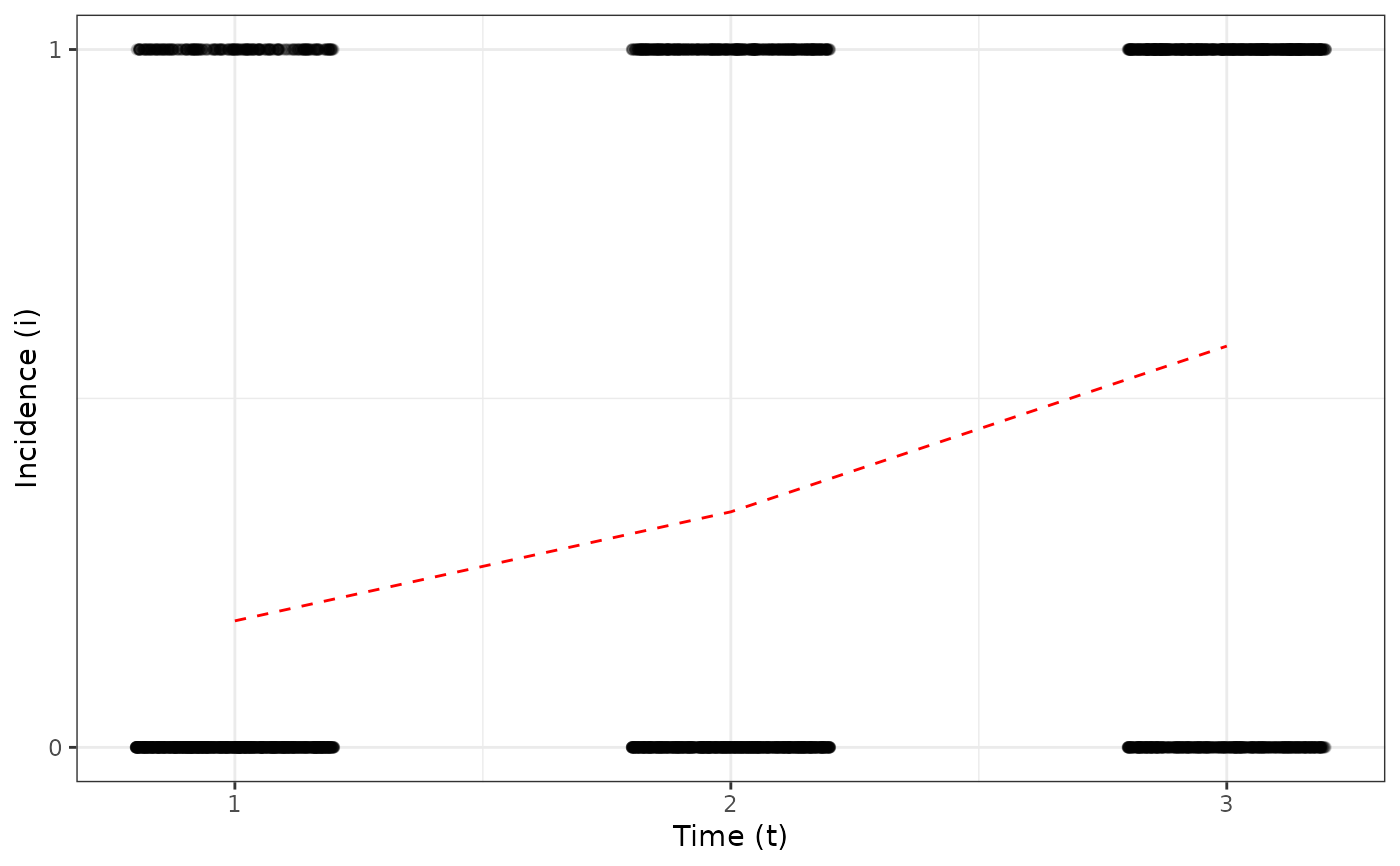Divide into groups and reassemble.
Usage
# S3 method for intensity
split(x, f, drop = FALSE, ..., by, unit_size)Arguments
- x
vector or data frame containing values to be divided into groups.
- f
a ‘factor’ in the sense that
as.factor(f)defines the grouping, or a list of such factors in which case their interaction is used for the grouping. Ifxis a data frame,fcan also be a formula of the form~ gto split by the variableg, or more generally of the form~ g1 + ... + gkto split by the interaction of the variablesg1, ...,gk, where these variables are evaluated in the data framexusing the usual non-standard evaluation rules.- drop
logical indicating if levels that do not occur should be dropped (if
fis afactoror a list).- ...
further potential arguments passed to methods.
- by
The name(s) of the variable(s) which define(s) the grouping.
- unit_size
Size of a group unit. It must be a named vector, with names corresponding to non-observational variables (i.e. space and time variables). If the size of a variable in the data set is not a multiple of the provided value in
unit_size, some sampling units (the last ones) will be dropped so that clumps of individuals remain even throughout the data set.
Value
A list of intensity objects.
Examples
my_incidence <- incidence(tomato_tswv$field_1929)
plot(my_incidence, type = "all")
#> Warning: Computation failed in `stat_summary()`
#> Caused by error in `get()`:
#> ! object 'mean_sdl' of mode 'function' was not found

 my_incidence_spl1 <- split(my_incidence, by = "t")
my_incidence_spl2 <- split(my_incidence, unit_size = c(x = 8, y = 20, t = 1))
my_incidence_spl1 <- split(my_incidence, by = "t")
my_incidence_spl2 <- split(my_incidence, unit_size = c(x = 8, y = 20, t = 1))
